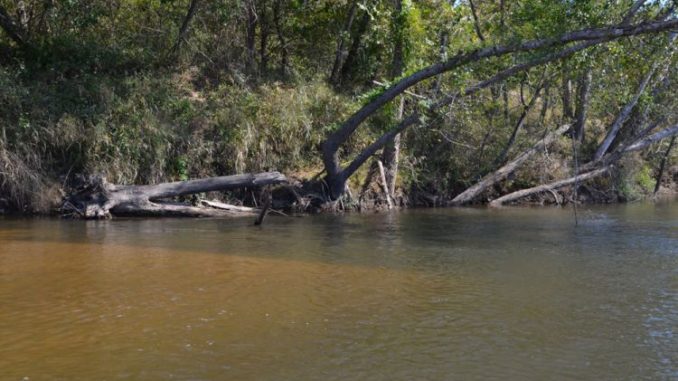
Not all water on the Bogue Chitto River is equal. Probably 80 percent of it is less than 1 foot deep and featureless, making it fishless as far as bass are concerned.
The first thing that Todd McElveen and Steven Schilling look for is deeper water than the gravel-bottomed riffles and runs that make up most of the river. Deeper water is indicated by the water being a dark green.
Steeply eroded banks on the outside of bends, what they call “clay banks,” produce some of the deepest areas. Clay banks produce both spotted and largemouth bass, but Schilling says 90 percent of the time that you catch a largemouth from the river, it is from a clay bank. Crankbaits are especially effective there.
Also highly productive are submerged logs lying directly across the river’s swift flow. A spinnerbait cast above the log and retrieved over it will often produce a hit as soon as it rolls over the log.
An ideal place to find spotted bass is in the swift water where it makes a “V” between two woody obstructions. Lures should be retrieved right down the notch.
Fallen wood not only provides cover for bass, it makes the river’s current scour a deep hole around or under it. Every log and stump should be as thoroughly probed as the river’s current will permit.
